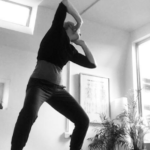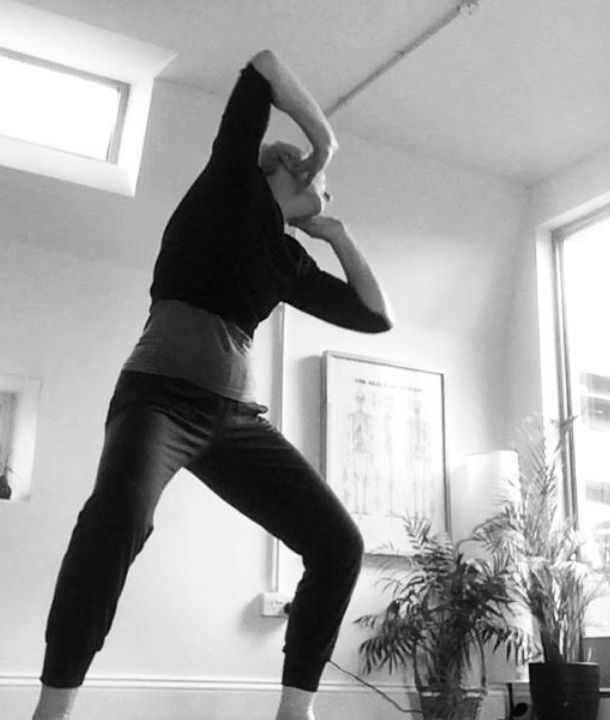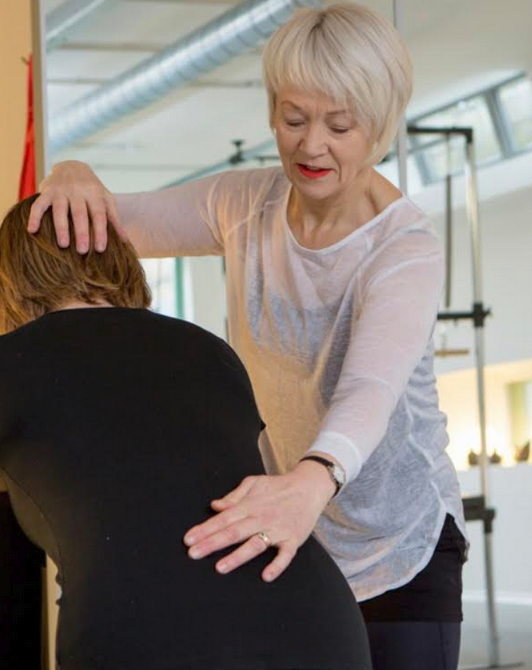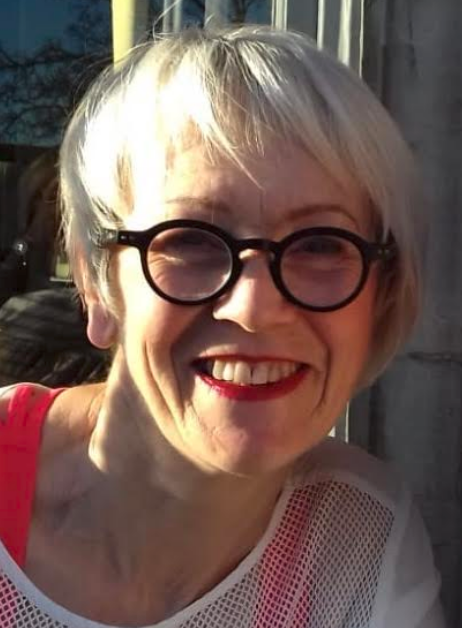Issue #337
Wednesday June 2, 2021
Sensing, Feeling…and Pilates. Somatics..What’s That?
by Patricia Issit
Somatics is a “broad brush” term describing many approaches to embodied movement practices. Put briefly, a somatic approach develops perceptual, kinesthetic and proprioceptive sensitivity with the purpose of developing awareness of soma, the felt body self.
Somatic practice has enriched Pilates classes for both me and my clients by giving ourselves permission to step away from an emphasis on perfecting form and performance and dropping into an experience of sensation that helps us notice how the body feels as it moves. By itself, this somatic experiencing is restorative on many levels; this way of knowing the body ultimately feeds back into every aspect of our lives, Pilates included.
My somatic practice is based on free dance movement and it differs from Pilates in that there is no formal structure. It goes without saying that I love the method and formality of Pilates, but somatic time is time spent with movement impulse and active imagination, a place for reflection and understanding, where I can put aside self-criticism. More than anything, this is a time to explore meaning and presence in the body and get involved in a relationship between body and mind.
Contemporary somatic practices are the result of creativity and collaboration over generations of movement education reaching back as far as the nineteenth century. From the Alexander Technique to Authentic Movement, from Bartenieff to Halprin, from Feldenkrais to Body Mind Centering, these methods help us explore the mind body connection. Our current Pilates practices also reach back into history and are rooted in the different schools developed by Joe’s students and the people who influenced them, each teacher adding their own wisdom to the work. We may be using postural cues borrowed from the Alexander technique, release work from Feldenkrais, breathing techniques from Gendlin and Selver, and rhythm from Bartenieff and Laban – all without realising where they have come from. Have a look at Martha Eddy’s excellent book Mindful Movement where she lays out the history of somatic education and discusses conscious embodiment as a social and political act.
So where do I begin when a client has no sense of their own body, can’t ‘cat stretch’ or tilt their pelvis? There are so many reasons for loss of bodily sensibility and agency, or for the shape of us, or the way we feel about ourselves. We know Joe said, “Contrology is not a fatiguing system of dull boring abhorred exercises repeated daily ad nauseum” (Return to Life, page 10) but on that page in the preceding paragraph he pointed out that “Teachers start with sense organs.” My work as a somatic educator is to make suggestions which might open doorways into movement perception. Not to direct (arm here, leg there … I did a lot of that when I was a fitness instructor!) but to allow my client to move however they can and for them to find meaning for themselves in their movement.
This is where bringing a somatic sensibility to Pilates can help, though I have to point out that this approach is not for everyone. People who work with me in somatic movement sessions are anticipating free movement, whereas many of my Pilates clients prefer to be directed. And that is OK! What’s important is that I respond to the needs of the client, sometimes “arm here, leg there” is the right thing at that time.
My somatic session might begin with acknowledging the external environment, looking around the room and noticing the colours of the walls, the shadows and light, and the other people who are in the room. Or noticing the texture of the floor, the feeling of clothes against skin, the weight of the body as it meets the ground. We bring ourselves into presence and embodiment with sight, smell, sound, touch and taste, the sound and movement of our breath and the feel of our skin.
Touch is an invitation for the body to move and reposition itself at more than just the muscular and skeletal levels. Touch facilitates change not only in the body but also in the mind. Our emotions are stimulated by touch. If we are unable to touch our client (because we are teaching through a screen for example), then we can still invite and guide our clients to be aware of their body through their own touching of skin and skeleton. We can rub hands together, tap, pat, rub arms and legs, face and scalp, massage feet and toes or explore the boniness of knees, ankle, pelvis, shoulders. Remember, the body is constantly being touched by something, whether clothing, ground or air, and we can bring our attention to this. Noticing and attending to touch is about waking up our felt sense of body.
In our somatic session, we might take several minutes for this “settling in time” –
to feel skin, or bone weight, or sense the presence of your organs. We could be standing, lying supine or prone, or seated, as the mover may choose. Then as facilitator, I must step back and allow the client to follow their own impulses, to discover their own movement. A few suggestions might help, such as imagining the spine as a colour or as a texture for example, but also remembering that this might be meaningless to the client and allowing for that experience too. A movement suggestion might be accepted or ignored, let the mover choose. In the brain, the neocortex and thalamus are involved in imagination, sensation and motor response. Using imagination to feel the weight of your pelvis, or the heart being jostled by the lungs, or the spine lengthening leads to felt awareness of bodily sensation.
If you can feel it and move it, you can change it. Through somatic movement, we are aiming to feel our body from within. But let’s remember our lived experience as well; emotions and unexpressed trauma are held in the body. Bringing a somatic sensibility to our Pilates clients invites them into body as a felt entity, but we should be competent enough to support the client with a sense of safety and reassurance. If somatic movement education is calling you, I suggest visiting www.ismeta.org. Try different styles and teachers, then take time to immerse yourself. Just as with our Pilates training, we can’t learn this by just reading about it.
Patricia Issit – I’m a Pilates teacher, Bowen therapist, Somatic Educator, artist and the founder of York Pilates Space, a comprehensive Pilates studio in the North of England where I spend most of my working days hands-on with clients, alongside my Pilates teacher daughter. My Pilates career started in 2000 but I’d been teaching every variety of fitness classes and weight training for 12 years by then – an artist needs a side hustle! I hold a degree in Fine Art and Design with a background in theatre and dance costume, and a postgraduate master’s degree in Dance and Somatic Wellbeing. My postgraduate research project examined the role of somatic education in supporting ageing. I’m affiliated with MK Pilates as a teacher trainer for the North of England, and I’m a member of ISMETA. I’ve also spent a lot of hours in the dissection lab at St. Andrews University with Gil Hedley and Julian Baker studying fascial anatomy. I love my work and especially love that somatic dance brings together all my varied interests: anatomy, experiential process, art making and moving. But most of all, supporting others in their physical journeys.




